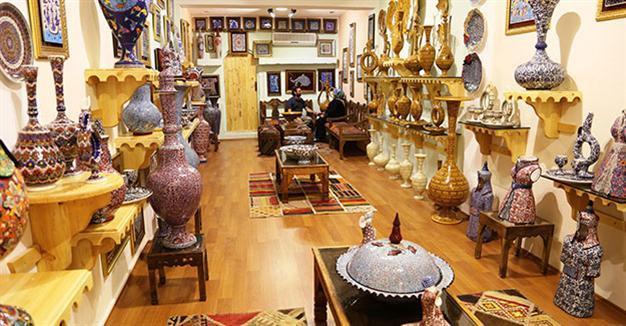Ceramic objects turn into artworks in talented hands in Turkey’s Avanos
NEVŞEHİR – Anadolu Agency

AA photo
Sculpted in the Central Anatolian province of Nevşehir’s Avanos, a town famous for its crafts, ceramic vases and plates are being transformed into works of art in the hands of talented local craftsmen.Ceramic vases and plates, products of a painstaking process of clay molding and shaping, are brought to life in the hands of talented painters and artists in Avanos, where ceramic plates designed with Hittite and Seljuq motifs are currently on display at a craft exhibition.
Seyfettin Maçan, the manager of a ceramics studio in the town, explained that the designs take around two days to take their final form, depending on the design and size of the object.
The traditional craft dates back to the Hittite era, but Maçan said it has taken a new form with ceramic glazing.
“In the past, Avanos was only known for its manufacture of ceramic glazed objects, but today it is possible to see various designs and products on display in galleries,” he added.
Describing the process of ceramic glazing, Maçan explained that the clay plates are put into a mold first of all before being left to dry for a day. After they take a proper shape and are brought to the studio, the artists take over and start decorating the plates with various designs, creating works of art.
Maçan said heat-resistant paint has to be used in the paintwork.
“Soil and dirt that is dug up is molded into clay. After this clay is put into molds in shapes of vases and plates, our artists start decorating them with motifs and patterns. Mostly these are patterns referencing the town’s history and culture, as we wish to appeal to the tourists. Each object is handled by one of our artists and they spend about two days completing their designs, depending on the object’s size. Then they’re cooked in high-heat in preparation for their daily use. The whole process of producing the clay, leaving it to dry and designing it takes about three weeks. This sort of handicraft requires patience and dedication,” he added.
Hittite, Seljuq and Ottoman motifs
An artist in the studio for almost eight years, Aynur Karataş underlines the importance of “focus” in the creative process, saying the nature of the paint makes it imperative that artists do not make any mistakes as they draw their motifs.
Karataş, referring to the motifs she uses from the Hittite, Seljuq and Ottoman eras, said their works are “specific to Avanos.”
“The technology we use allows us to shape the clay into forms of vases and plates, producing ceramic products specific to Avanos. The designs and motifs we paint turn these objects into appealing and elegant products,” she added.
Fellow artist Gülşah Yılmaz said she has produced innumerable works of art over the course of six years dedicated to the craft after being educated on the art by craftsmen in the studio.
“Sometimes a vase or a plate may take days to finish, but I really enjoy the craft and the work I do,” Yılmaz said, adding that generally opts to depict motifs related to the Hittite era in her designs.
Esma Uğurlu, a high school student spending her summer vacation attending art workshops at the studio, also focuses on ancient Hittite themes, and expressed her wish to further pursue her interest in the future.
















